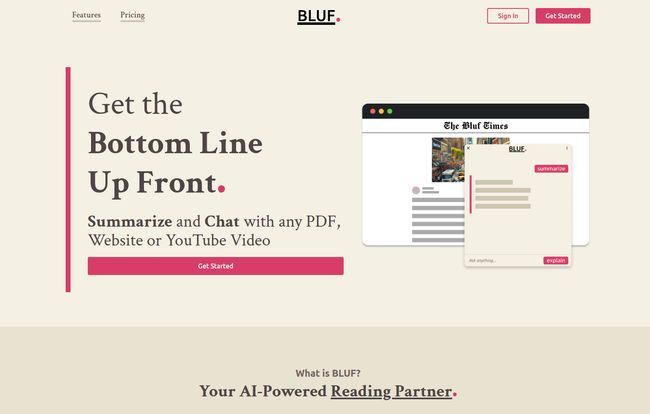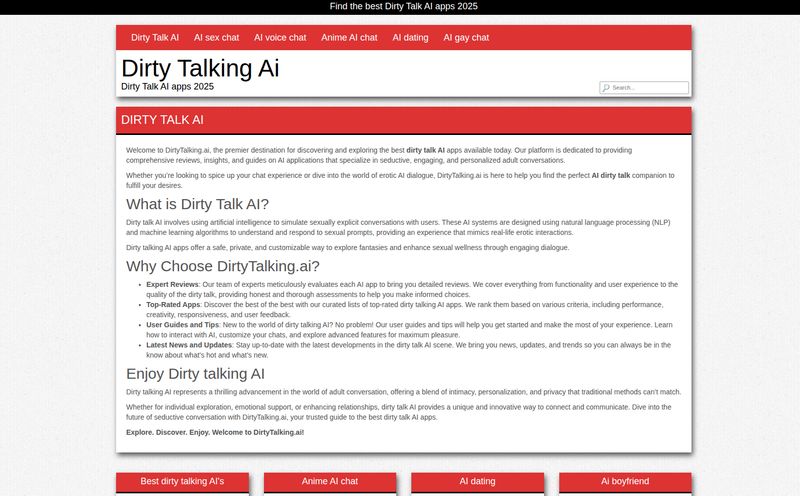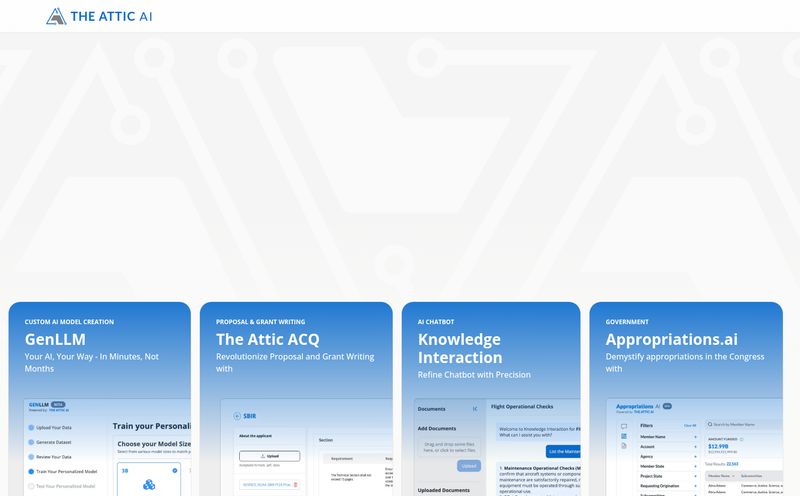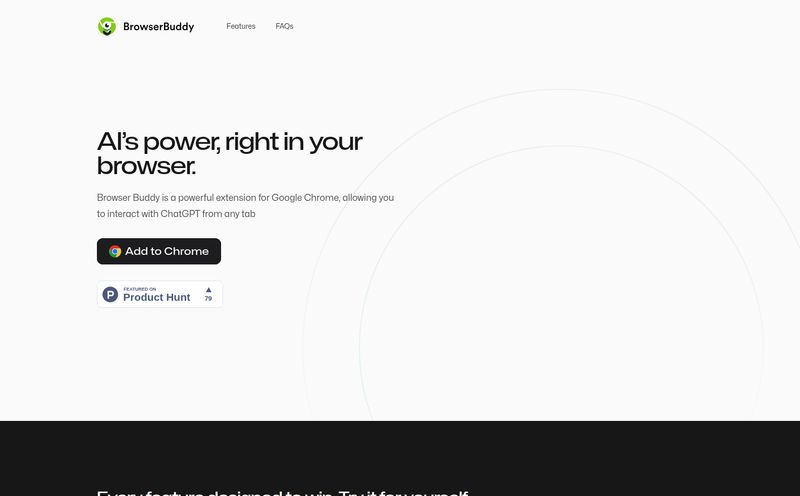The internet is a firehose of information pointed directly at our faces. As someone who lives and breathes SEO, my day is a constant battle against an ever-growing reading list. White papers from Google, 10,000-word competitor blog posts, hour-long YouTube tutorials on the latest algorithm shift… it’s a lot. My browser tabs often look like a cry for help.
For years, I've searched for the perfect tool to tame this digital beast. A magic wand to wave over a dense academic study or a rambling forum thread and just… get the point. So when I stumbled upon a browser extension called BLUF, my curiosity was definitely piqued. The name itself, an old military acronym for “Bottom Line Up Front,” was exactly what I was looking for. No fluff, just the important stuff. But does it deliver? I’ve spent the last few weeks putting it through its paces, and well, let’s just get into it.

Visit BLUF
So What Exactly is This BLUF Thing?
At its core, BLUF is an AI-powered browser extension that acts like a hyper-intelligent research assistant living in your browser. Its one and only job is to cut through the noise. It uses the power of ChatGPT to read a webpage, a PDF, or even a YouTube video you're on and give you a concise summary or a simple explanation. Think of it as the CliffsNotes for the entire internet.
It's currently available for Chrome, Firefox, Edge, and Opera, so most of us are covered. The setup is painless—a few clicks from the app store and you’re ready to roll. No complicated onboarding, no hoops to jump through. I appreciate that. Time is the one thing I’m trying to save, after all.
My First Run: Putting BLUF to the Test
The first thing I tested it on was a notoriously dense Google Search documentation page. These things are incredibly useful but can be dry and technical. I navigated to the page, hit the keyboard shortcut (Shift + Alt + B, which is now muscle memory), and a neat little window popped up. I had two main options: Summarize or Explain.
I clicked “Summarize.” Within about ten seconds, it spat out a few clean bullet points that perfectly captured the essence of the document. It was… impressive. It wasn't just a random collection of sentences; it was a genuinely coherent summary. I immediately thought of all the hours I could save on competitor research alone. This thing could be a game changer.
The Standout Features That Actually Matter
After that initial success, I started throwing everything I could at it. Here’s what stood out to me.
Summarize, Explain, and Ask Follow-up Questions
The core functionality is split into three parts. Summarize is your go-to for getting the TL;DR of an article or report. It’s perfect for quickly vetting if a piece of content is worth a deeper read. Explain is slightly different. I found it’s best for those moments when you encounter a complex concept or technical jargon. Instead of giving you a summary, it tries to break down the topic like you’re five. It’s brilliant for learning new things without getting bogged down.
But the secret sauce for me is the Ask feature. After getting a summary, you can chat with the AI and ask follow-up questions about the text. “What were the main data points in this study?” or “Who was quoted in this article?” It turns a static piece of content into a dynamic conversation. This is where the real power lies for researchers and students.
It Works on More Than Just Websites
This was the big one for me. BLUF isn't just for blog posts. It handles local and online PDFs flawlessly. All those research papers and e-books I have saved? Summarized. But the real surprise was its ability to digest YouTube videos. It pulls the transcript and summarizes the entire video, so you can get the key takeaways from an hour-long presentation in about two minutes. For someone who needs to keep up with industry conference talks and tutorials, this feature alone is worth its weight in gold.
Who Is This Tool Really For?
The website lists a bunch of user types—students, journalists, researchers—and they're not wrong. But from my perspective as a digital marketing professional, the use cases are huge.
- SEO Analysts: Quickly break down a competitor's pillar page or a Google patent to understand their strategy without spending a whole afternoon reading.
- Content Marketers: Researching a new topic? Feed a dozen articles into BLUF to rapidly identify common themes, statistics, and expert opinions.
- Social Media Managers: Find the most 'quotable' bits from an article or video to create engaging social media posts in a fraction of the time.
- Busy Professionals: Anyone who has to get through a packed inbox of newsletters, reports, and company-wide announcements can use this to stay informed without losing their entire morning.
Basically, if your job involves absorbing large amounts of text, this tool has something to offer.
Let's Talk Money: The BLUF Pricing Breakdown
Alright, the all-important question: what’s this going to cost? The pricing structure is refreshingly straightforward, and I think they've priced it very fairly.
| Plan | Price per Month | Key Limits | My Take |
|---|---|---|---|
| Free | $0 | 25 prompts / month, 20k words / page | Perfect for casual users or students. It's more than enough to get a feel for the tool and use it on the occasional long article. Honestly, it’s a very generous free tier. |
| Standard | $4 | 200 prompts / month, 50k words / page | This is the sweet spot for most professionals. If you use it a few times a day, this is probably all you'll need. The price of a cup of coffee. |
| Professional | $10 | Unlimited prompts, 200k words / page | For the power users. Researchers, journalists, and SEOs like me who might analyze dozens of documents a week. The unlimited prompts and massive word count mean you never have to think about limits. |
You can check out the full details on their pricing page. For what it does, the cost feels more than reasonable, especially when you factor in the time saved.
The Not-So-Perfect Parts: A Dose of Reality
No tool is perfect, and it would be dishonest to pretend BLUF is. There are a couple of things to be aware of. First, the developers themselves admit that the generic 'Ask' prompt isn't optimized for summarizing massive documents. You really should use the dedicated 'Summarize' and 'Explain' buttons for big jobs, as they are specifically tuned for that. It's a minor quirk once you know about it.
The bigger consideration for some will be privacy. To work its magic, BLUF has to send the content of the page you're on to OpenAI. BLUF states they don't store the content of your prompts or the answers, but OpenAI's policies apply. They say OpenAI doesn't keep the data for more than 30 days. For 99% of what I do, this is a non-issue. But would I use it on a highly sensitive internal company document? Probably not. It’s just something to keep in mind.
Final Verdict: Is BLUF Worth Installing?
So, after all this, do I recommend BLUF? Yes. A thousand times, yes. It's not just another shiny AI toy; it's a genuine productivity tool that solves a very real problem. It cuts down on research time, helps you absorb complex information faster, and makes the firehose of the internet feel a little more like a manageable drinking fountain.
It's one of those rare tools that, once you start using it, you wonder how you ever got by without it. It's earned a permanent spot on my browser's toolbar.
Frequently Asked Questions about BLUF
- 1. What’s the difference between a prompt and using the 'summarize' button?
- A prompt is any message you send to BLUF, including asking a question or using the 'summarize' or 'explain' buttons. Each use counts as one prompt. However, the dedicated buttons are optimized for large content, while the general chatbox is better for specific, smaller questions.
- 2. What does the “words/page” limit mean?
- This refers to the maximum number of words BLUF can process in a single go. For example, on the Free plan, it can summarize an article up to 20,000 words long. If you have a document longer than your plan's limit, you can often just highlight a specific section and right-click to have BLUF focus only on that part.
- 3. Does BLUF collect my personal data?
- According to their FAQ, BLUF collects usage data (like how often features are used) to improve the product, but not the content of what you're summarizing or asking. The content is sent to OpenAI for processing, which has its own data retention policy.
- 4. Can I use BLUF on my phone?
- As of now, BLUF is a browser extension for desktop computers (Chrome, Firefox, Edge, Opera). There isn't a dedicated mobile app, though some mobile browsers that support desktop extensions might work.
- 5. Is it really free to start?
- Yes, the free plan is genuinely free. It gives you 25 prompts per month, which is a great way to test drive the tool and see if it fits into your workflow before committing to a paid plan.
Conclusion
In a world drowning in content, tools like BLUF are more than just a convenience—they're a necessity. It’s a simple, elegant solution to the problem of information overload. It’s fast, effective, and fairly priced. If you value your time (and your sanity), I can't recomend it enough. Go grab the free version and see for yourself. You might just get a few hours of your week back.



